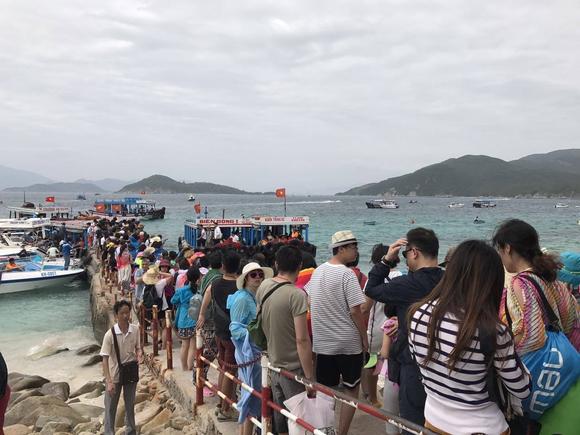Vietnam prepares for influx of Chinese tourists

HO CHI MINH CITY -- This week, some 20 Vietnamese travel agents met in Khanh Hoa Province to establish an association catering to tourists from China to share information, implement joint promotions and develop human resources.
The need for one became apparent when Chinese arrivals in Vietnam last year increased 51% to 2.69 million. Khanh Hoa and Danang, the two most popular provincial destinations, received 600,000 and 400,000, respectively.
China is the largest source of visitors to Vietnam, with 2.69 million in 2016, compared with under a million in 2010. In the first two months of this year, of the 2 million foreign arrivals, over 650,000 were from China -- a 77% increase year on year.
Khanh Hoa Province and its capital, Nha Trang, attracted media interest when authorities decided to open up Cam Ranh Bay, a military area, to international logistics companies and to foreign shipping.
Khanh Hoa is some 400km north of Ho Chi Minh City and was popular with European visitors in the 19th and 20th centuries. Dr. Alexandre Yersin (1863-1943), who isolated the bacillus responsible for the bubonic plague, is buried there. In recent years, the province's beaches became favorites of Russian tourists seeking alternatives to the Middle East.
Last year, the number of Chinese visitors to Khanh Hoa tripled year on year. While welcome, this seriously strained the tourism infrastructure. Nguyen Van Thanh, vice chairman of the Nha Trang-Khanh Hoa Tourism Association, said average occupancy in the three- to five-star hotels favored by the Chinese approached 100%.
Trong Truong, a hostel owner, said his property has been filled by independent travelers unable to find hotel accommodations. Truong said he had seen nothing like this since starting out seven years ago, and his monthly income as a tour guide had doubled.
Chinese tourist groups usually number 150 to 200. The influx has exposed problems, such as the lack of Chinese-speaking staff and inexperience in dealing with sometimes inappropriate behavior. Vietnam has roughly 1,500 tour guides proficient in the language, and they work mainly in Hanoi, Ho Chi Minh City and Danang. There has been a rush to translate materials into Chinese and to train Chinese-speaking staff.
Local media have picked up on the negatives, reporting about overcrowded destinations as well as Chinese agents and guides acting without proper authorization -- leading to distortions in the way Vietnam's history and culture have been presented. China's currency has also been used illegally in local markets.
Chinese visitors dropped 8% in 2015 to 1.78 million after China set up offshore rigs in disputed Vietnamese waters, sparking protests against Chinese businesses in Vietnam. Arrivals recovered in 2016 and are expected to rise again this year.
The country scrambles to cope with increase as China cuts outbound travelers to South Korea
That trend will be helped by China imposing travel restrictions on its nationals visiting South Korea because of its great displeasure with the Terminal High Altitude Area Defense anti-missile system from the U.S. being deployed there. Half of South Korea's 16 million foreign visitors in 2016 were from China.
Chinese visitors to Southeast Asia favor seaside destinations. This benefits Vietnam, which is also geared for flights in Danang, Nha Trang, the island of Phu Quoc and Dalat. The country is also perceived as offering good overall value for the money.
Cheri Nguyen, who handles Chinese visitors for the Vinpearl luxury resort chain, said its Chinese clientele was up 30% in the December-February peak season, and reservations are almost full for the rest of the year.
Ho Chi Minh City is Vietnam's top destination and expects 5.7 million foreign arrivals this year. With China becoming so important, a Chinese-language version of its tourism authority's website has been added. A code of behavior has also been published in Chinese, along with English, Korean, Russian and Vietnamese editions. Respecting local culture and customs, obeying regulations, protecting the environment, and not wasting food and drink all figure prominently.
(Nikkei)


